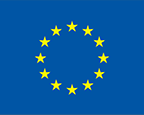Biologically available fractions of contaminants
Within the framework of the ArcRisk project, food items, such as salmon, smoked halibut, whale and seal meat were purchased from the local market in Nuuk, Western Greenland, and examined for POP concentrations and distribution patterns. The concentrations for all pesticides were in the lower to medium (ng/g) range. The narwhal mattak (a local delicacy; blubber and skin from narwhal) samples showed the highest PCB and pesticide concentrations. These samples were analysed for chiral pesticides (α-HCH, trans- and cis-chlordane and the metabolite oxychlordane) as well. Chiral environmental pollutants are excellent indicators for the estimation of bioavailability and biotransformation potential in biological systems, even on an individual basis for top predator organisms (Kallenborn and Hühnerfuss, 2001; Wong and Bidleman, 2011). If the enantiomeric fraction (EF=EF1/(EF1+EF2), see info to the right, deviates from racemic distribution of enantiomers (EF=0.5), it is mainly caused by direct enantioselective biodegradation and/or accumulation. Enantioselective analytical methods can therefore help to estimate the bioavailability and biotransformation potential for chiral organic pollutants. The largest deviation from racemic distribution among the Greenlandic food items was found for all chiral compounds in narwhal. Many marine mammals (e.g., narwhal) have a notable metabolic capacity for biotransformation of POPs. Thus, potentially harmful transformation products are found in marine mammal tissues as a considerable contaminant contribution. These findings are considered as an indication of the above-average metabolic capacity of narwhals for biotransformation of the selected chiral organic pollutants.
Factors affecting bioavailability
Bioaccumulation factors (BAFs) determine the potential for accumulation of POPs in species. Factors presented within a suite of different studies are listed, se table below, for toxaphene, chlorinated benzenes, HCHs, DDTs, chlorobornanes, PCBs and PBDEs in plankton (Calanus spp) and beluga – ringed seal (PCB and PBDE). How much of a POP that is taken up in animals are determined by different factors, where the bioconcentration factor (BCF) is one of them. Bioconcentration factors means that POPs are up-concentrated from water to animals – like zooplankton at low trophic levels. The higher Kow (partitioning coefficient octanol-water), the higher BCF.

Bioavailability of contaminants in soil and sediments
Parameters that determine the bioavailability of POPs in soils and sediments:
- Physical-chemical properties
- Distribution and degradation of the pollutant
- Composition of the food web investigated
- Abiotic environmental characteristics (e.g. organic carbon content)
- Bioturbation (reworking of upper sediment layer by benthic fauna)
- Water–sediment interface interactions, pore water
All the processes described above are temperature dependent. Thus, changes in magnitude and relevance for bioavailability can be assumed for several climate change scenarios. For cold environments, ice- and snow-related interfaces must also be considered, both in a marine as well as a terrestrial/cryospheric setting. Local ecosystem characteristics are also important to consider when assessing bioavailability in a specific environment.






















